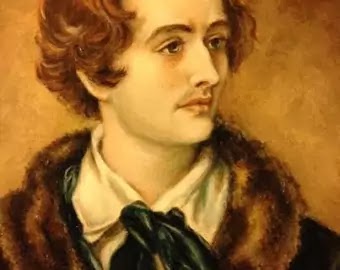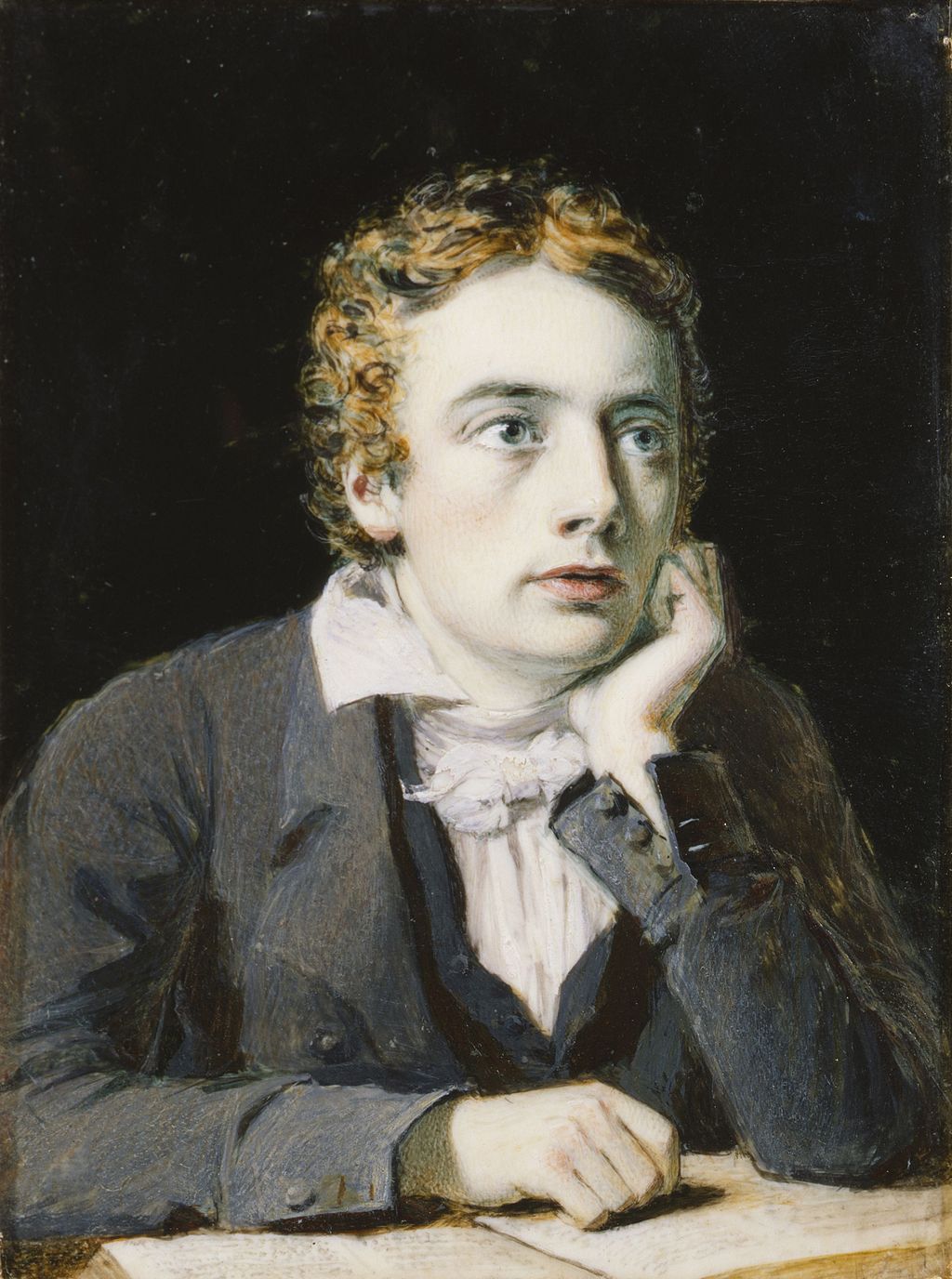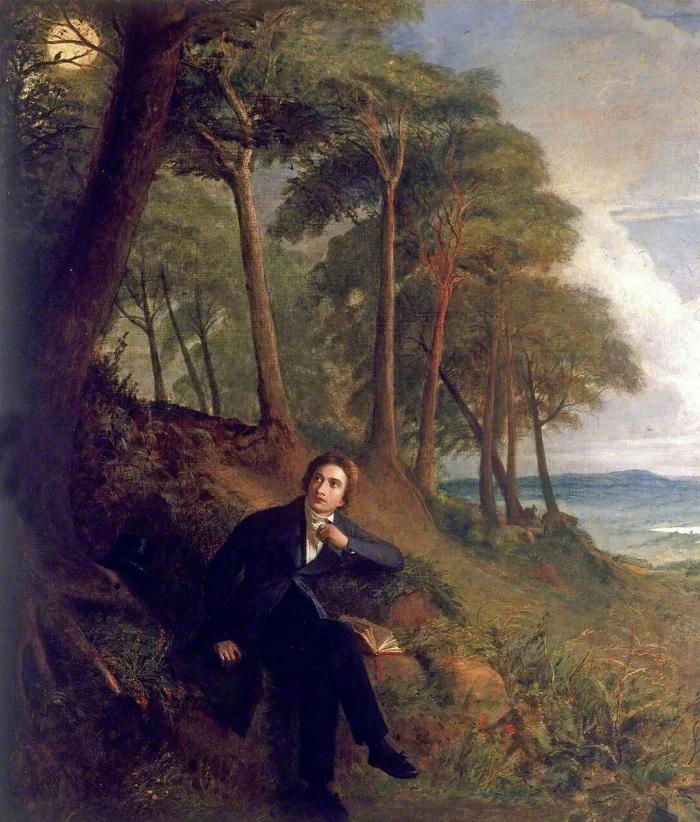
He wrote poetry only out of what he felt upon his pulses. It is his sense impressions that kindled his imagination which makes him realize the great principle that: Beauty is truth, truth beauty that is all!
By Ghansham Narwani
John Keats, who was born on 31 October 1795 and died on 23 February 1821 due to tuberculosis at the age of 25, was one of the main figures of the second generation of romantic poets along with Lord Byron and Percy Bysshe Shelley. Although his poems were not generally well received by critics during his lifetime, his reputation grew after his death and by the end of the 19th century, he had become one of the most beloved of all English poets.
 In Keats’s palace of poetry, the nucleus is sensuousness; but the superstructure has chambers of more abiding things and more permanent colors. Keats was considerably influenced by Spenser and was, like the latter, a passionate lover of beauty in all its forms and manifestations. Beauty, indeed, was his pole star, beauty in nature, in woman, and in art. Keats is a mystic of the senses and not of thoughts as he sought to apprehend the ultimate truth of the universe through aesthetic sensations and not through philosophical thoughts. He wrote poetry only out of what he felt upon his pulses. Thus, it is his sense impressions that kindled his imagination which makes him realize the great principle that:
In Keats’s palace of poetry, the nucleus is sensuousness; but the superstructure has chambers of more abiding things and more permanent colors. Keats was considerably influenced by Spenser and was, like the latter, a passionate lover of beauty in all its forms and manifestations. Beauty, indeed, was his pole star, beauty in nature, in woman, and in art. Keats is a mystic of the senses and not of thoughts as he sought to apprehend the ultimate truth of the universe through aesthetic sensations and not through philosophical thoughts. He wrote poetry only out of what he felt upon his pulses. Thus, it is his sense impressions that kindled his imagination which makes him realize the great principle that:
“Beauty is truth, truth beauty that is all”
The poets give the impressions received by their eyes only, but Keats’ poetry appeals to our sense of sight, hearing, taste, smell and touch and sense of hot and cold. He exclaims in one of his letters:
‘O for a life of sensation than of thought’
This is a line taken from one of Keats’ letters to his friend Bailey. This line is often quoted to show Keats’s sensuous nature.
Picture of the eye
Keats is a painter in words. With the help of a mere few words, he presents a solid, concrete picture:
“Her hair was long, her foot was light
And her eyes were wild”
“I saw their starved lips in the gloom
With horrid warning gaped wide.”
These pictures are statuesque (like a stone statute). They remain firmly fixed in our memory.
And in “Ode on Grecian Urn” again the sense of sight is active.
Attic shape! Fair attitude! With brede
Of marble men and maidens overwrought,
With forest branches and the trodden weed!
Sense of hearing
The music of the nightingale produces pangs of pain in poet’s heart.
“Forlorn: The very word is like a bell
To toll thee back from thee to my sole self.”
In Ode on Grecian Urn he says:
“Heard melodies are sweet but those unheard
Are sweeter; therefore, ye soft pipes play on”
Sense of touch
The opening lines of La Belle Dame Sans Merci describe extreme cold:
“The sedge is withered from the lake
And no birds sing.”
Calvin called the line “And no birds sing’, as the best line in English literature.
Sense of taste
In Ode to Nightingale, Keats describes many wines, the idea of their taste is intoxicating:
“O for a beaker full of the warm South:
Full of the true, the blushful Hippocrene,”
In La Bella Dame Sans Merci—-
She found me roots of relish sweet
Of honey wild and manna dew.”
Pictures of smell
The poet can’t see the flowers in the darkness. There is mingled perfume of many flowers:
“I cannot see what flowers are at my feet,
Nor what soft incense hangs upon the boughs,
But, in embalmed darkness, guess each sweet.”
Fast fading violets covered up in leaves
And mid May’s eldest child,
The coming musk-rose, full of dewy, wine
The murmurous haunts of flies on summer eves.
Technicolor pictures
Keats paints colored pictures. The multi-colored wines and flowers are painted with a colorist’s delights:
Full of true, the blushful Hippocrene,
With beaded bubbles winking at the brim,
And purple stained mouth.
The sensuous appeal of “La Belle Dame”
 The short masterpiece, La Belle Dame Sans Merci, has its own sensuous appeal. The lady is described as “full beautiful, a fairy’s child”, with long hair, light foot, and wild eyes. The knight makes “a garland for her head, and bracelets too, and fragrant zone”. She finds him roots of sweet relish, wild honey, and manna dew. And then
The short masterpiece, La Belle Dame Sans Merci, has its own sensuous appeal. The lady is described as “full beautiful, a fairy’s child”, with long hair, light foot, and wild eyes. The knight makes “a garland for her head, and bracelets too, and fragrant zone”. She finds him roots of sweet relish, wild honey, and manna dew. And then
She took me to her elfin grot,
And there she wept and full sore,
And there I shut her wild eyes with kisses four.
Ode to autumn
Perhaps the best example of Keats sensuousness is Ode to autumn. In this ode the season of autumn is described in sensuous terms in which all senses are called forth.
“Season of mists and mellow fruitfulness
Close bosom friend of the maturing sun”
For Keats Autumn is the season of apples on mossed cottage tree, of fruits which are ripe to the core and of later flowers for bees. Thus, autumn to Keats is full of picture of delights of senses. There is the ripe fruit and ripe grains and there is music that appeals to the ear.
Keats’s epithets rich in sensuous quality
The epithets he uses are rich in sensuous quality watery clearness, delicious face, melodious plot, azure lidded sleep, sunburnt mirth, embalmed darkness, anguish moist. Not only were the sense perceptions of Keats quick and alert, but he had the rare gift of communicating these perceptions by concrete and sensuous imagery. How vivid and enchanting is the description of wine-bubbles in the line:
With beaded bubbles winking at the brim.
Keats’s sensuousness in different colors in his matured poetry
As his mind matured, his sympathies broadened, and he felt at one with the human heart in travail. Sensuousness is still there, weaving its fairy tissues as before but the coloring is different. In his mature poems, it is gradually manifested with the stirrings of an awakening intellect, and is found charged with pain, passing for the beautiful is transformed into an intellectual and a spiritual passion. He sees things, not only in their beauty, but also in their truth. And it is partly by reason of his perception of truth in sensuous beauty that Keats has become the, “inheritor of unfulfilled renown”
“Keats’s mind is mainly sensuous by direct action, but it also works by reflex action, passing from sensuousness into sentiment. Certainly, some of his works are merely, extremely sensuous. In his mature performances in the Odes, for example, in Hyperion, sensuousness is penetrated by sentiment, voluptuousness is permeated by vitality, and aestheticism is tempered by intellectualism. So “sensuousness is a paramount bias” in Keats’s poetry is largely true; even as it is true that he is more a poet of sensuousness than of contemplation.
____________________
 Ghansham Narwani, a young English graduate from Tharparkar, is associated with teaching.
Ghansham Narwani, a young English graduate from Tharparkar, is associated with teaching.